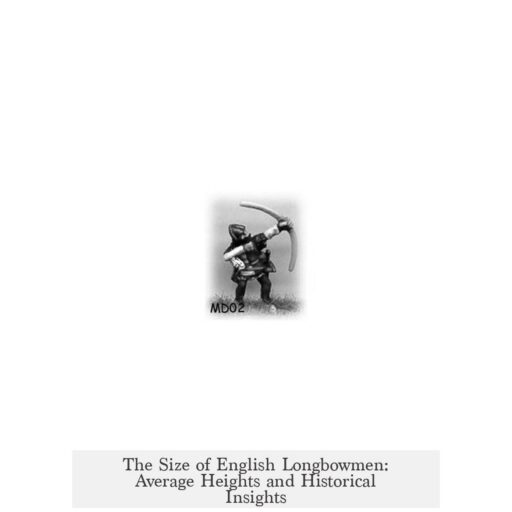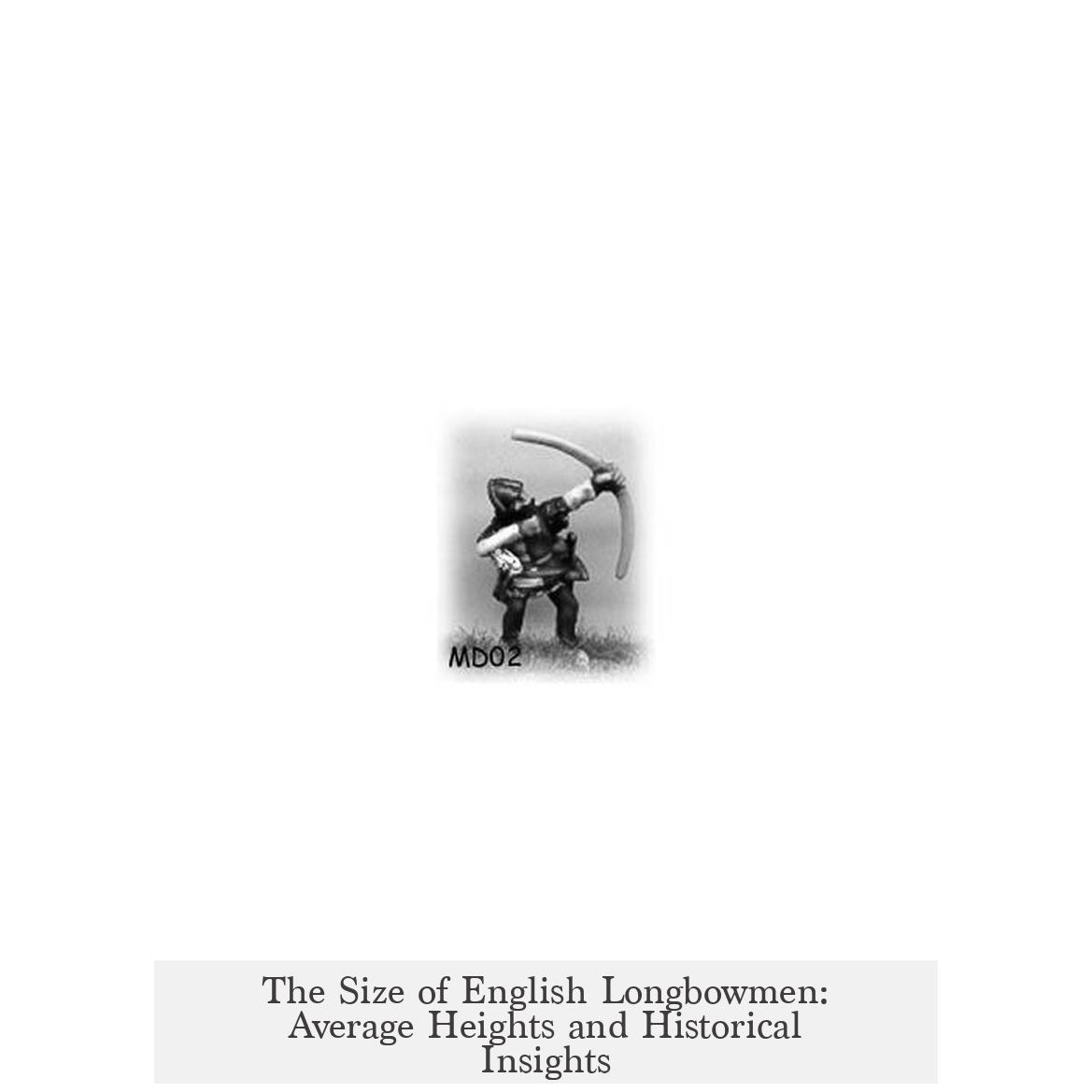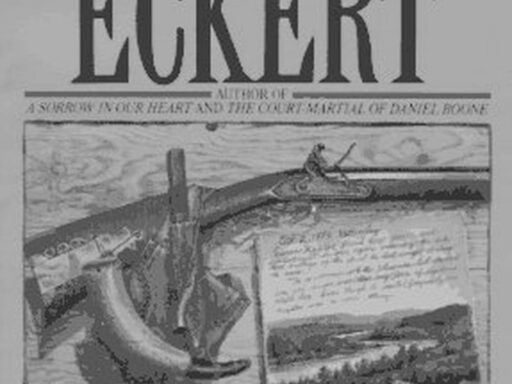English longbowmen did not have a specific height or size requirement. Their selection focused on their ability to use the longbow effectively, rather than physical dimensions. Archaeological and historical evidence suggests that their average height was close to that of typical medieval English men, approximately 5’7″ to 5’8″.
The English military system did not enforce standardized physical measurements for soldiers, including longbowmen. Contracts detailing recruitment emphasized equipment and combat capability, not height or weight. Commanders accepted men capable of fighting, regardless of stature. A one-armed archer would be rejected, but a shorter man able to wield a bow effectively would be enlisted.
This approach reflects the practical nature of medieval warfare. Nobility lacked the resources and motive to impose arbitrary physical standards. Archers needed competence with their weapons more than ideal body measurements. Family members often served alongside knights as archers, showing variation in size and background among recruits.
Medieval English men averaged around 5’7″ or 5’8″ in height, based on various anthropological studies. This average most likely applies to archers as well, since no physical selection excluded shorter or taller men. Skeletal remains from archaeological sites support this estimate.
| Archaeological Find | Estimated Height | Notes |
|---|---|---|
| Towton 16 Archer | 5’9″ | Slightly taller than average |
| Mary Rose Archer (facial reconstruction) | 5’9″ | Reflects some variation above average |
These taller examples may reflect an archaeological bias. Skeletons showing certain changes caused by early use of heavy bows (like os acromiale and Medial epicondylar apophysitis) help identify archers. However, some men may have switched to stronger bows only in adulthood, so their skeletal markers appear weaker.
Social background influences these findings. Men serving as archers with knights—often sons or relatives—received better nutrition and started archery young. Their bones bear clearer marks of professional archery, skewing archaeological samples slightly taller than the general population of archers.
Research on arrowheads from Oxfordshire supports the existence of bows of varying strength. Some arrows came from bows under 80 pounds draw weight, implying not all archers used heavy war bows. This points to diversity in archer skill and equipment, not uniform physical standards.
- Archers did not need to meet height or size rules; competence mattered more.
- Average height of English longbowmen probably matched the medieval male average of about 5’7″ to 5’8″.
- Some archaeological samples show taller individuals but may be biased toward well-fed or professional archers.
- Skeletal features identifying archers depend on youth use of heavy bows, missing late learners.
- Family and social ties influenced better nutrition and training, impacting skeletal data.
- Varied bow strengths existed among archers, reflecting diverse backgrounds.
Several sources detail these conclusions, including analysis of skeletal remains from Towton and the Mary Rose, along with studies of medieval arrows and military contracts. These findings clarify that English longbowmen’s size was practical, not standardized, aligning with typical medieval English male stature.
How tall or large were English longbowmen? Unraveling the size mystery
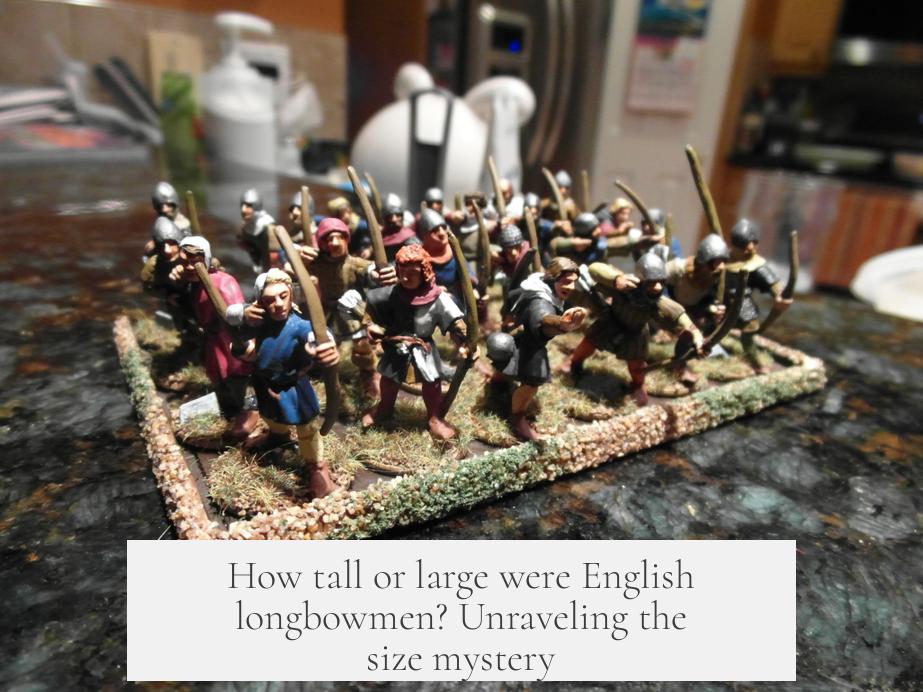
English longbowmen came in all shapes and sizes but the typical height was about 5’7″ to 5’8″. That’s roughly as tall as the average medieval Englishman. No strict height rules governed who could be a longbowman. Their ability to wield the mighty longbow mattered far more than how tall they stood.
Imagine a lineup of determined archers—some a bit shorter, some taller. None get measured with a ruler by their captain. Instead, the question is, “Can you handle a 120-150 pound draw weight on that bow?” If yes, you’re in; if no, better luck next time.
There weren’t any written height standards for English soldiers, longbowmen included. The contracts these men signed focused on their armor and weapons, not on their physical stature. Even a one-armed man wouldn’t pass muster, but a shorter-than-average soldier with perfect aim and skill might very well do so.
The average height of medieval English archers: reality check
Historical studies say the average English male in medieval times stood around 5’7″ or 5’8″. This is a useful barometer for our archers. Why? Because archers were drawn from the general populace; they weren’t a club of giants or dwarves.
Besides, nutrition and health influenced height deeply back then. Poor diet meant many didn’t grow tall. Still, some archers definitely tipped the scales a bit higher. For instance, the skeletal remains excavated at Towton, associated with an archer called Towton 16, measured about 5’9″. The Mary Rose Trust’s famous archer whose face was reconstructed was around the same height. These examples might suggest a slight skew towards taller archers in archaeological digs.
Is the archaeological record fooling us on archer height?
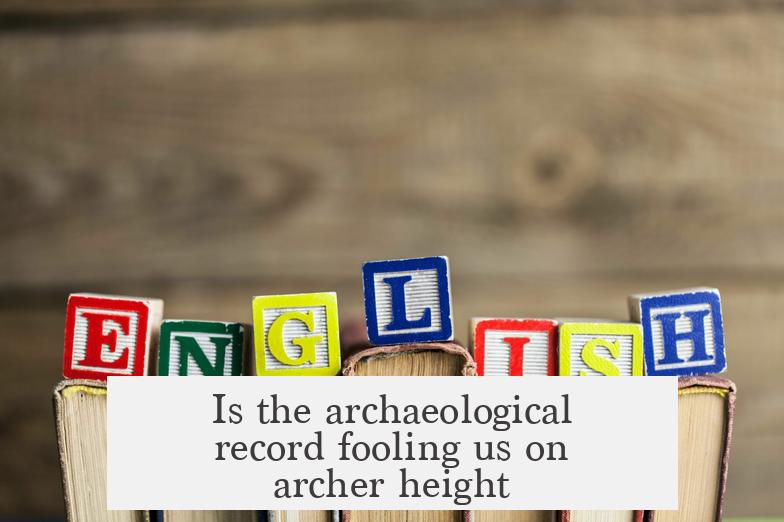
Hold on, though! We must consider the natural quirks of archaeology. Skeletal evidence can be biased. Certain skeletal markers like os acromiale or medial epicondylar apophysitis hint at habitual use of heavy bows, but only if the bow was trained with in youth. Some men may have picked up archery only as adults, which doesn’t leave such pronounced skeletal signatures.
Richard Wadge’s research into medieval arrowheads in Oxfordshire shows many were used with lighter bows under 80 pounds of draw weight. So, if your skeleton doesn’t scream ‘heavy archer,’ it doesn’t mean you weren’t an archer—it might mean you wielded a gentler longbow. That impacts how archaeologists interpret height from bones.
Better-fed archers: family ties and a taller sample?
Not all archers were commoners with tough lives and limited diets. Some were relatives—sons or brothers—of men-at-arms. They accompanied their fighting family members on campaigns. These younger family archers likely received better food and early training. Naturally, they may have been taller and stronger.
Guess what? These better-fed young archers are exactly the ones more likely to show up in the archaeological record because they used heavier bows from youth. This would cause a slight skew in the average height observed from skeletal remains.
What does this all mean for understanding longbowmen size?

It means picture the longbowmen not as an elite, evenly tall squad but as a varied bunch held together by skill, endurance, and strength. Some stood around 5’7″ or 5’8″. Some, like Towton 16 or the Mary Rose archer, slightly taller at 5’9″. Others would have been shorter or had lighter bows, not leaving noticeable bone markers.
So, the image of the English longbowman as a tall, burly giant? That’s a myth. Instead, they were simply capable warriors who fit into the average height range of their society. Their power came from training and technique, not towering stature.
Ready to take a shot? Practice tips from the past:
- Skill beats size: Whether you stand 5’4″ or 6’0″, your ability to shoot accurately and with power matters most.
- Strength builds over time: Young medieval archers were conditioned to draw heavy bows early, changing their physique and bones. Modern archers can train gradually to improve.
- Equipment counts: Using the proper bow suited to your strength prevents injury and improves performance.
Finally, next time you imagine a band of English longbowmen forming ranks before a battle, picture a diverse group: average-sized men armed with longbows, ready to change history one arrow at a time. Their height was an incidental detail, dwarfed by their marksmanship and endurance.
References: Blood Red Roses: The Battle of Towton, Mary Rose Trust facial reconstruction study, and research by Richard Wadge on medieval arrowheads
How tall were typical English longbowmen?
The average medieval Englishman stood about 5’7″ to 5’8″. Longbowmen were generally around this height, with no clear rules demanding they be taller or shorter.
Were there physical requirements for becoming a longbowman?
No formal height or size requirements existed. Archers had to be capable of using their bows effectively. Physical disability like losing an arm would disqualify someone, but shorter men could still serve.
Do archaeological finds support these average heights?
Skeletal remains show some archers around 5’9″. This likely reflects a bias since healthier or better-fed archers, such as those from wealthier backgrounds, appear more in records and graves.
Could the size of longbowmen have varied widely?
Yes. Natural variation meant some archers were taller or shorter. Factors like diet and social status influenced height, so not all archers would have matched the average exactly.
